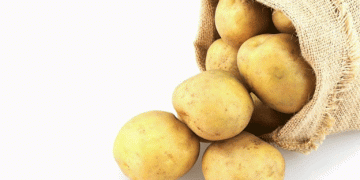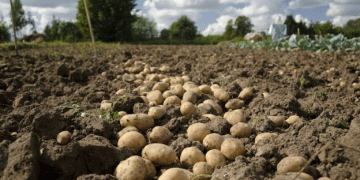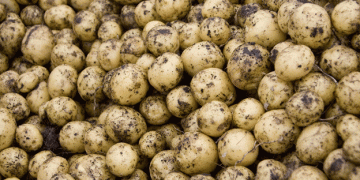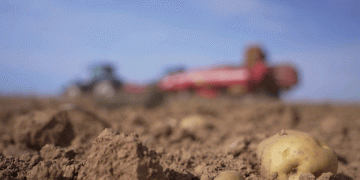The 1840s Irish potato famine stands as a stark reminder of the devastating impact plant diseases can have on food security. The blight that ravaged Ireland’s potato crops, caused by the pathogen Phytophthora infestans, led to widespread famine and population decline. However, the battle between potatoes and this pathogen didn’t end in the 19th century. In fact, the struggle continues today as plant breeders and scientists race to outpace the evolving pathogen.
A recent study from North Carolina State University has shed new light on this evolutionary arms race. Published in Nature Communications, this research is the first to simultaneously analyze both the potato plant’s resistance genes and the pathogen’s effector genes—those that help the pathogen infect the host. By examining DNA from historic potato leaves, researchers were able to trace the co-evolution of both the plant and the pathogen over the last century.
A Groundbreaking Approach
The research team, led by former graduate student Allison Coomber and Professor Jean Ristaino, used a cutting-edge technique known as targeted enrichment sequencing. This method allowed them to extract and analyze specific fragments of DNA from both the plant and the pathogen present on the same leaf samples. In traditional studies, researchers would focus on either the plant or the pathogen, but this dual approach offered a more comprehensive view of their interaction.
Dr. Jean Ristaino, the William Neal Reynolds Distinguished Professor of Plant Pathology at North Carolina State University, emphasized the novelty of this method:
“We couldn’t have done this work 15 years ago because the genomes weren’t sequenced. The dual enrichment strategy allowed us to capture targeted regions of both the host and pathogen genomes, even in unequal amounts.”
The research focused on the FAM-1 strain of Phytophthora infestans, which was responsible for the Irish potato famine and has since continued to plague potato crops globally. The study revealed that this strain could resist the potato plant’s R1 resistance gene long before plant breeders began deploying it. This suggests that the pathogen had already been exposed to similar resistance genes in wild potato populations, giving it a head start in overcoming human intervention.
The Pathogen’s Adaptation
One of the most striking findings of the study was the pathogen’s remarkable ability to evolve in response to resistance efforts. Even as plant breeders introduced new resistance genes, the pathogen managed to stay one step ahead, altering its effector genes to maintain its infective prowess. The research also found that the pathogen added a set of chromosomes between 1845 and 1954, likely contributing to its evolutionary success.
However, not all of the pathogen’s effector genes have changed. Some have remained remarkably stable over the last century, suggesting they play crucial roles in its survival. Targeting these stable genes could be a potential strategy for future plant breeding efforts.
Coomber explained the significance of these stable genes:
“After 100 years of human intervention, there are some genes that haven’t changed much in the pathogen. They are very stable, potentially because they are really important to the pathogen. Targeting those genes would make it really hard for the pathogen to evolve an opposing response.”
Implications for Future Breeding
The study’s findings could have far-reaching implications for future potato breeding programs. By understanding how the pathogen has evolved over time, breeders can develop more effective resistance strategies. For example, they may opt to use resistance genes that have proven to be more stable or combine multiple resistance genes from different wild potato species—a strategy known as pyramiding.
Dr. Ristaino noted:
“It’s hard to do effective plant breeding when we don’t know enough about the pathogen. Now that we know what effectors have changed over time, breeders may be able to use resistance genes that are more stable or pyramid multiple resistance genes from different wild hosts.”
This research represents a significant step forward in the ongoing battle against Phytophthora infestans and highlights the importance of understanding both plant and pathogen genetics. The work was funded by several grants, including support from the Triangle Center for Evolutionary Medicine and the National Science Foundation.
The study from North Carolina State University underscores the complexity of plant-pathogen interactions and the challenges faced by breeders in developing durable resistance. As the arms race between potato plants and Phytophthora infestans continues, this research provides crucial insights that could lead to more resilient crops in the future. Targeting stable effector genes and employing strategies like gene pyramiding may offer new ways to combat one of agriculture’s most persistent threats.






